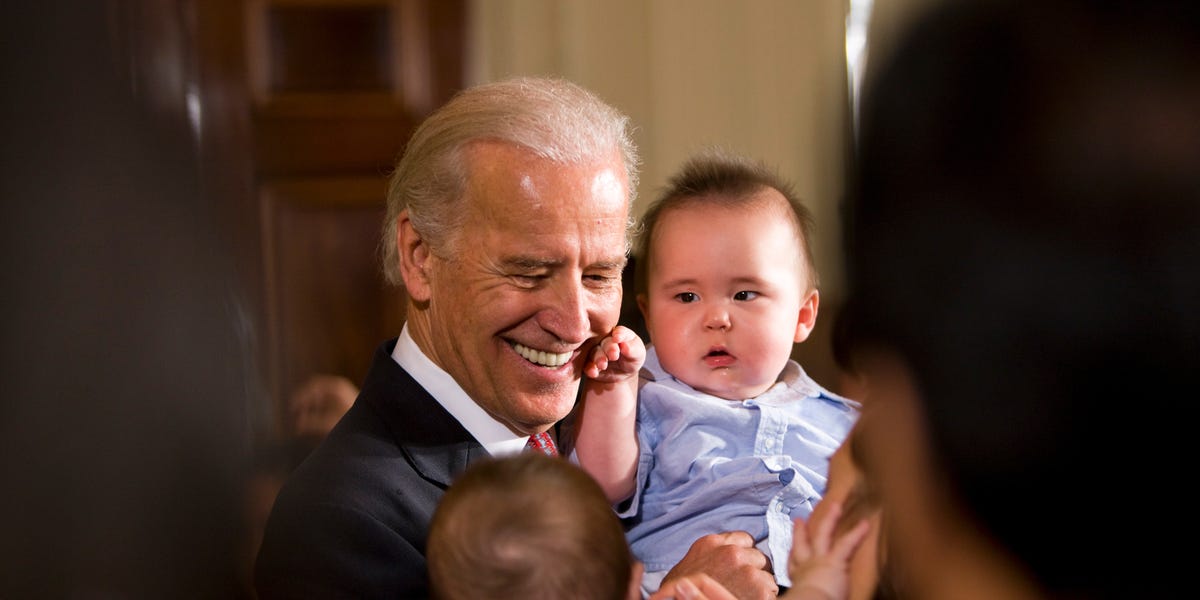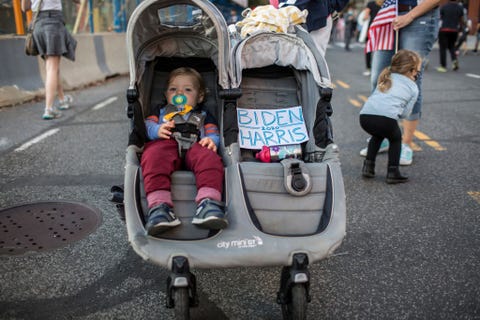Products You May Like
Women showed up to vote in record numbers in the 2020 election that narrowly gave Democrats control of government over all three branches of government. For their victories up and down the ballot, Democratic candidates have women to thank—and they should do so by focusing squarely on the priorities and needs of the women who put them in office.
You may have heard of the “gender gap” in elections—often defined as the difference in the percentage of women and men supporting a specific candidate. Indeed, in the 2020 presidential election, women voted for President Biden by a margin of 55 to 44 percent. Women of color were among President Biden’s strongest supporters, voting for him by even larger margins.
But the true gender gap in politics goes far beyond voters’ candidate preferences. Women are the majority in this country and we have been the majority of voters in every presidential election since 1964. In 2020, we cast nearly 10 million more ballots than our male counterparts.
Women also built the network of support that put President Biden in the White House. Over 2.4 million women donated to the Biden presidential campaign compared to fewer than 1.7 million men. Additionally, a majority of Biden’s campaign staff were women.
In Georgia, where control of the Senate was decided in 2020, Black women’s voting power forced two runoff elections and ultimately elected Senators Warnock and Ossoff. Two years earlier, Democrats overwhelmingly took control of the House of Representatives thanks to women, who voted for Democrats by a margin of 58 percent to 40 percent.
The women who put Democrats in power live in cities, suburbs, and rural America. We come from different backgrounds, and we are of different races and ages. But we share the belief that the politicians we supported must keep the promises they made to advance critical priorities in support of women and families—and that our government should represent us.
The initial Build Back Better agenda proposed a comprehensive set of interventions with the potential to fuel transformative change. After months of negotiation, the framework announced by the White House last week includes important historic investments in policies that matter to women like child care, the child tax credit, and home care and community-based services. These investments will make a big difference in the lives of millions of women, especially care workers who are disproportionately women of color and too often underpaid and undervalued. Yet it is still deeply disappointing that a major pillar of the caregiving agenda—national paid family and medical leave— is not currently included in the framework announced by the White House. Without comprehensive paid leave, we are missing an opportunity to make a transformational investment in the wellbeing of women and families across this country.
In the first year of the pandemic, faced with caring for children, elderly parents, sick loved ones and themselves—all while trying to hold down jobs—nearly 3 million women in the United States were forced to leave the workforce. A key reason is that only 23 percent of workers in this country have access to paid family leave through their employers, according to the National Partnership for Women & Families.
Those of us who have been in this position recognize that no one should be forced to choose between a paycheck and caring for a sick child or elderly family member. It’s no surprise that 74 percent of women—including 62 percent of Republican women—believe that paid family and medical leave should be included in the Democrats’ Build Back Better legislation.
Yet the U.S. remains the only higher-income country in the world without any form of national paid leave. That is simply unacceptable.
The unified control of government that women delivered for Democrats presents a chance to correct inequities and enact initiatives that meet the needs of working families. They shouldn’t squander it by putting paid leave on the back burner.
Women who made their voices heard at the ballot box elevated leaders in the White House and Congress who now have the ability to pursue such transformational change. Women voted, and now, we’re watching.
Women deserve a Build Back Better plan that fully addresses the challenges that women face day in and day out. Thanks to the leadership of the Speaker and the stalwarts in the House and Senate who refuse to give up—and the millions of people across the country who have spoken out and told their stories—paid leave is back on the table. Build Back Better means creating an economy that works for everyone—and that includes paid leave. With elections in two states this year and the midterms fast approaching, women will be watching, and we will be voting again soon.
This content is created and maintained by a third party, and imported onto this page to help users provide their email addresses. You may be able to find more information about this and similar content at piano.io

